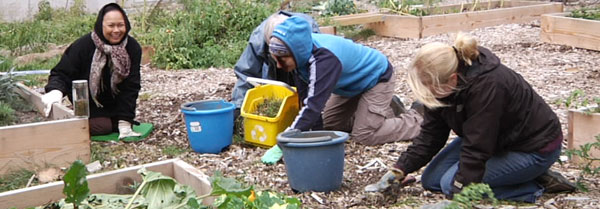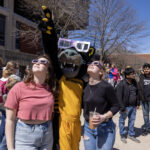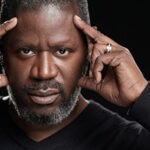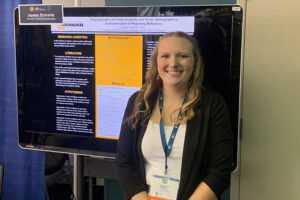There’s a thriving “green jobs” market awaiting college graduates, and the Princeton Review says UW-Milwaukee is a leading provider of the academic, research and real-world experiences students need to compete for in-demand green jobs.
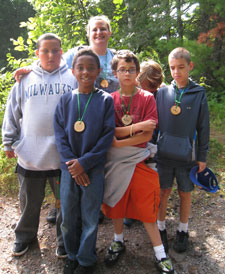
UWM received its third consecutive “Green College” rating and a detail-packed profile in “Princeton Review’s Guide to 322 Green Colleges,” an annual publication co-sponsored by the Review and the U.S. Green Building Council.
“Schools that have a good Green Rating will put graduates a step ahead of the competition and help ready them for the jobs they really want,” says the Review.
Local experts agree, including alumna Emily Brown. She earned a bachelor’s degree in Conservation and Environmental Science (CES) in 2006. She’s now director of education and outreach for Keep Greater Milwaukee Beautiful. One of the benefits of studying sustainability in an urban academic setting, she says, is the “whole picture” approach that a community-connected university like UWM can offer.
“There’s competition for these jobs – more people are interested in them, so you have to work harder to prepare for the field,” says Brown.
She offers this practical advice: “Volunteer. Take service learning seriously. Internships are essential. Take a variety of courses. Do study abroad. Look at the whole picture before you.”
Sustainable, interdisciplinary, extracurricular
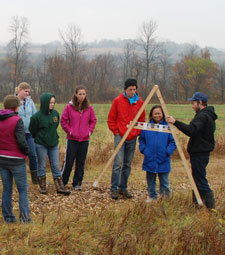
All of the above are academic or extracurricular features of the university’s popular CES degree, a BS or BA program based in the College of Letters & Science. Glen Fredlund, program director and geography professor, says students are drawn to the major because they want to make a difference. They remain enrolled in CES, he suggests, because of the program’s flexible and career-relevant curriculum. Students select from broad academic offerings that pair well with the CES sustainability focus: biology, geography, geology, chemistry.
“But hands-on experience and skill-building are very important,” Fredlund adds.
For professional experience and sustainability service, CES students rely on the program’s vast network of partnerships with environmental leaders throughout Southeastern Wisconsin: Urban Ecology Center, Wisconsin Department of Natural Resources, Growing Power, Alliance for the Great Lakes, Keep Greater Milwaukee Beautiful, the Milwaukee BIOME Project and others.
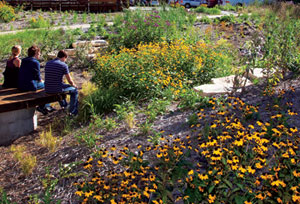
That experience might begin with 10 hours of service-learning work. Advanced CES students are encouraged to pursue for-credit internships and undergraduate research experience, ranging from river cleanups to migratory bird surveys, and organic agriculture to clean-water testing. The program’s capstone course assigns every CES major to a four- or five-person project team that looks at a key issue related to urban sustainability – and designs a model response.
“Sustainability can seem so abstract,” says Program Coordinator Mai Phillips. “That’s why we developed the capstone course to get students working on real-life applications in sustainability, working as experts in their own field to solve environmental issues.”
Faculty advisers and the interdisciplinary CES framework also encourage individualism and entrepreneurism.
“What I’m hoping is that our grads are more entrepreneurial – not just relying on jobs that already exist,” Phillips says. “Sustainability is about identifying needs that are out there, and creating a way to fulfill them.”
Finding opportunity from UWM to Costa Rica
Sustainability soars on campus
In the 2012 edition of “Princeton Review’s Guide to 322 Green Colleges,” UW-Milwaukee earns high marks for how sustainability is woven into daily operations.
The review cited UWM recycling efforts dating back to the mid-1980s: “As early as 1984 UWM started recycling its yard waste…. Today, UWM recycles everything from lab chemicals to construction to e-waste.”
Also mentioned in UWM’s green profile is the university’s successful “Energy Matters” conservation project to reduce energy use in some of UWM’s oldest buildings.
Additionally noteworthy is the Downer Woods nature preserve, open to campus and community visitors year-round and tucked along the East Side campus’ northern edge. A campuswide Stormwater Master Plan, including multiple UWM green roofs and campus acreage converted into native gardens, boost UWM’s natural green beauty and soak up storm water that might otherwise contaminate the local water supply.
UWM students live and learn in one of the University of Wisconsin System’s only LEED Gold Certified Buildings, the sustainable, state-of-the-art and stylish Cambridge Commons – located only a few yards from the Milwaukee River and the Beerline Loop trails that welcome nature enthusiasts, runners and bikers year-round.
“Beyond the green roofs, energy savings and gardens, the mindset and expectations of UWM are aimed at a sustainable future for all,” says CES alumna and UWM Sustainability Coordinator Kate Nelson. “The roots of sustainability have grown strong across the campus.”
Emily Brown says coursework and faculty connections helped her pursue a chain reaction of opportunity that allowed her to master Spanish and develop her sustainability credentials as an undergrad.
“The pivotal moment was taking a UWinteriM trip to Costa Rica, led by Professor Tim Ehlinger,” Brown says. “It was an amazing adventure. I fell in love with what was happening there.”
She returned to Costa Rica’s Tirimbina Rainforest Center months later to begin a unique internship CES faculty helped her design. The UWM Center for International Education helped her coordinate travel-abroad resources and a scholarship to defray the costs. At Tirimbina she connected with the Milwaukee Public Museum education director and landed a second internship. Inspired by her experiences combining conservation and education, she became one of the first UWM students certified by the National Association for Interpretation. She received bachelor’s degrees in Spanish and CES in 2006.
Today, Brown uses all of it – the Spanish, the NAI certification, community connections and current CES interns and service learners – as education and outreach director at Keep Greater Milwaukee Beautiful.
“One thing I’ve learned,” she says, “is that having a variety of knowledge, experience, skills is so important in sustainability.”
